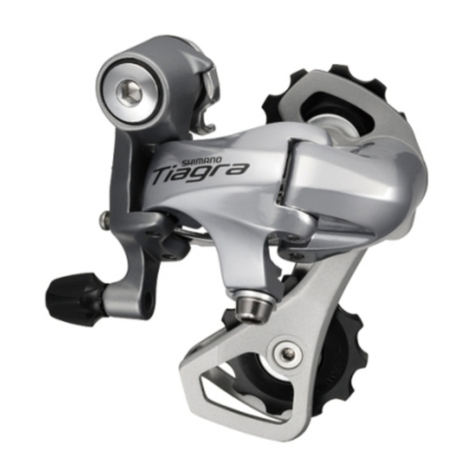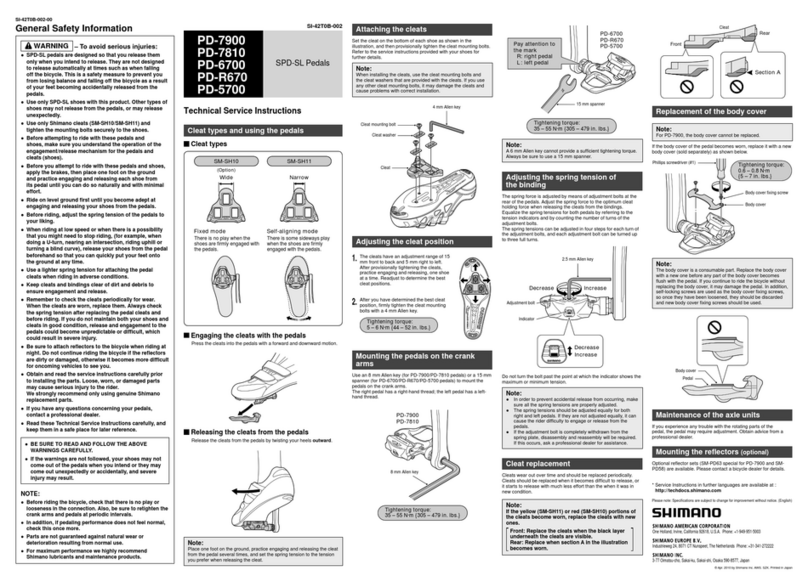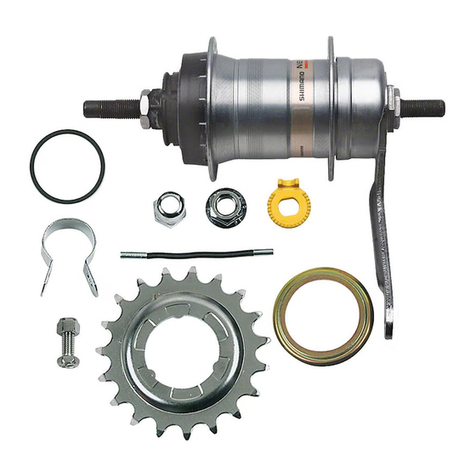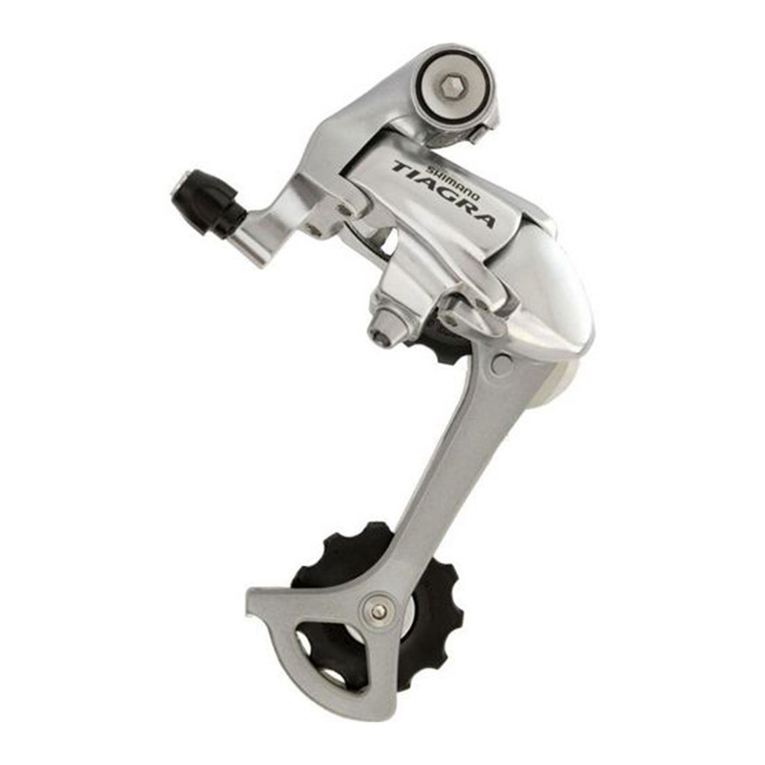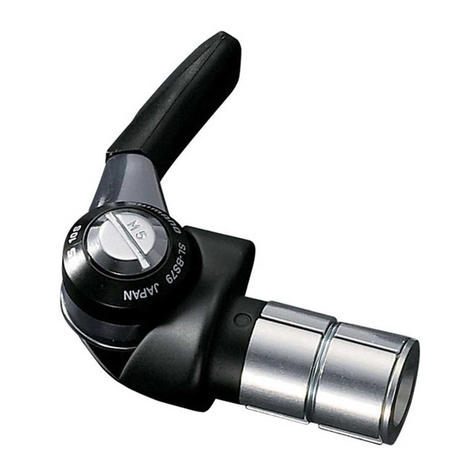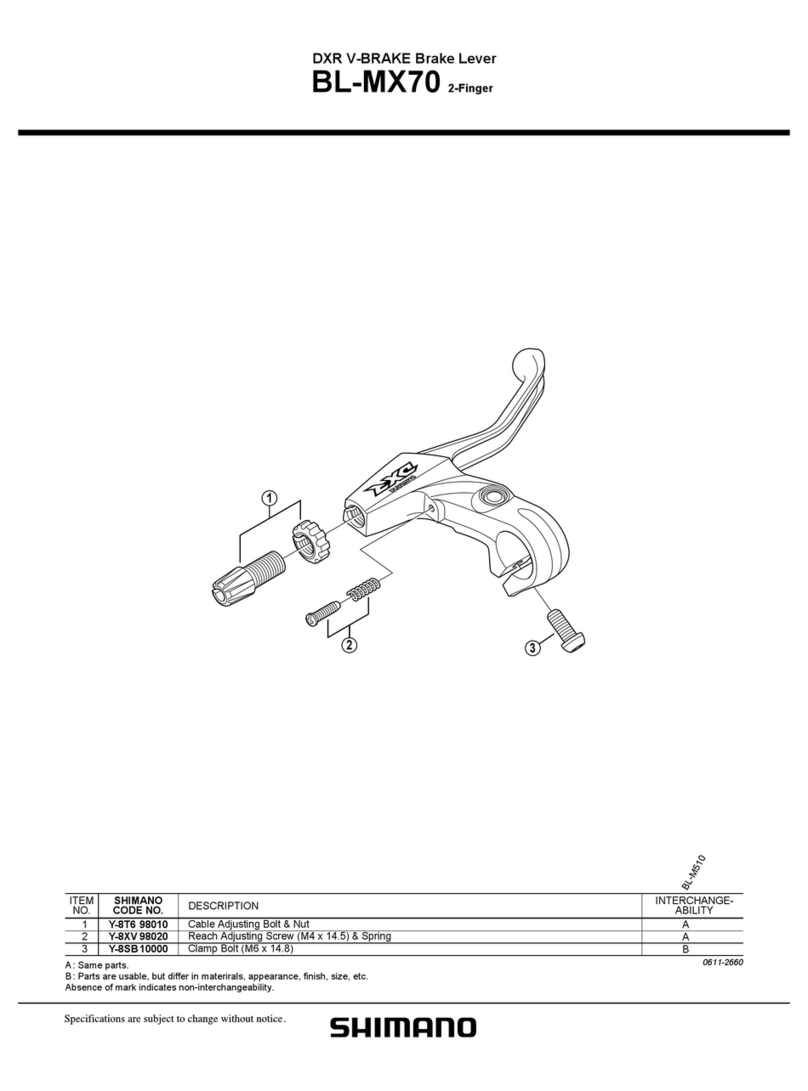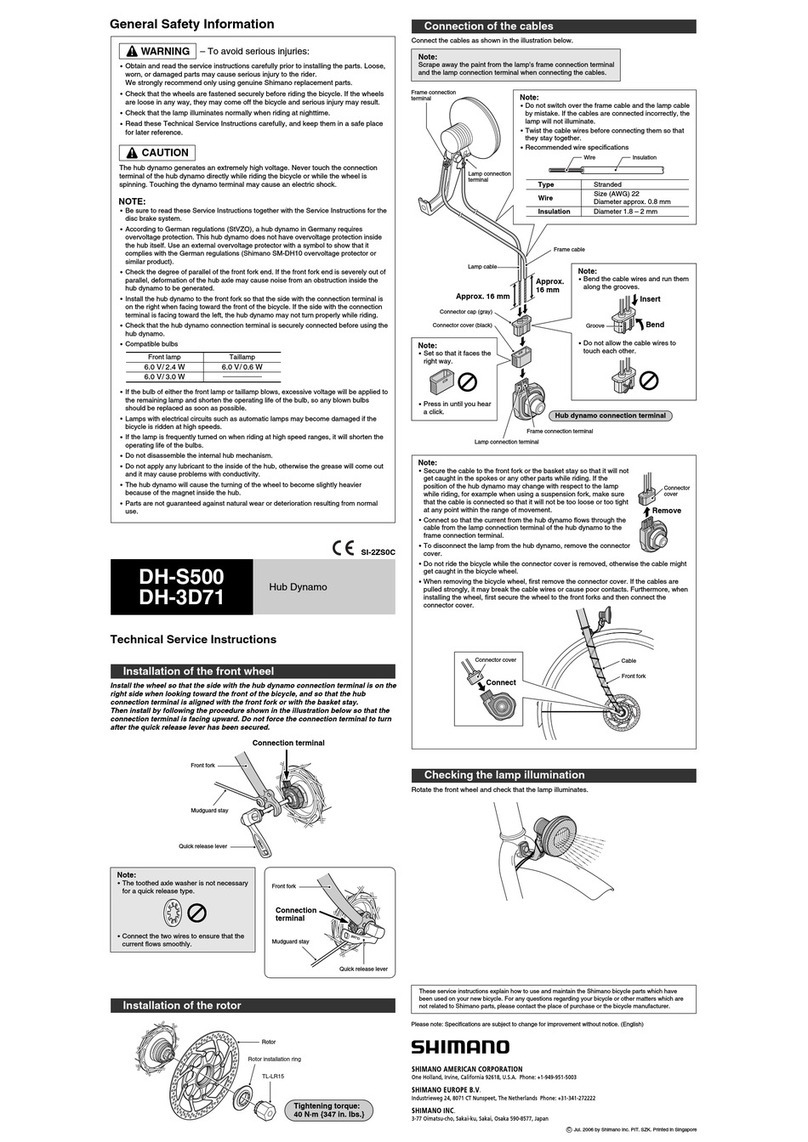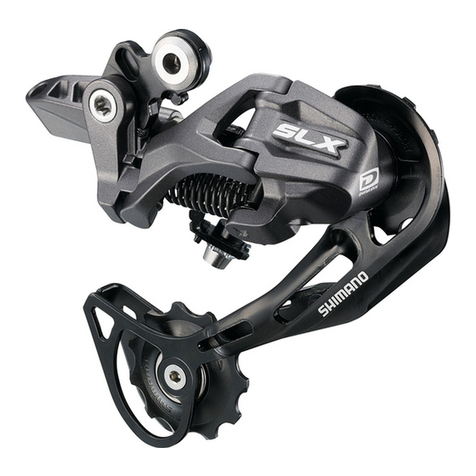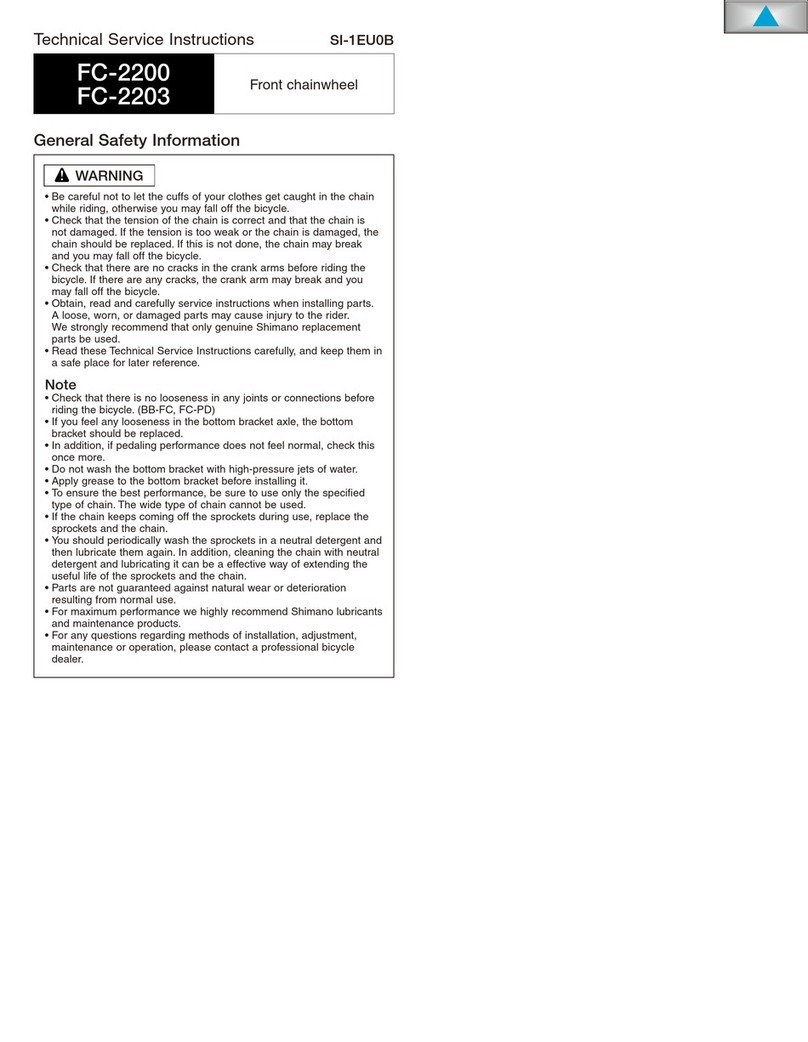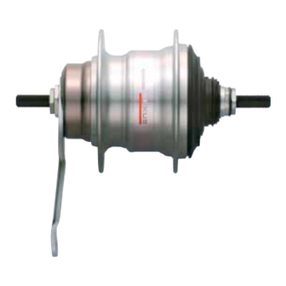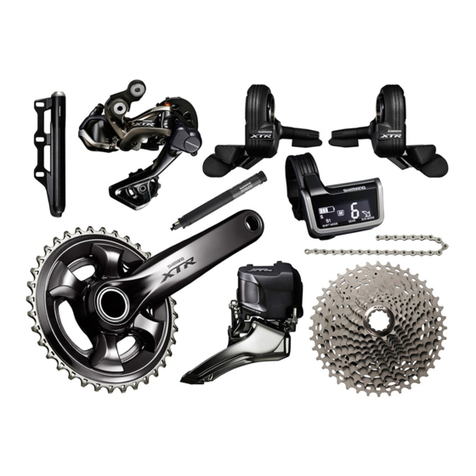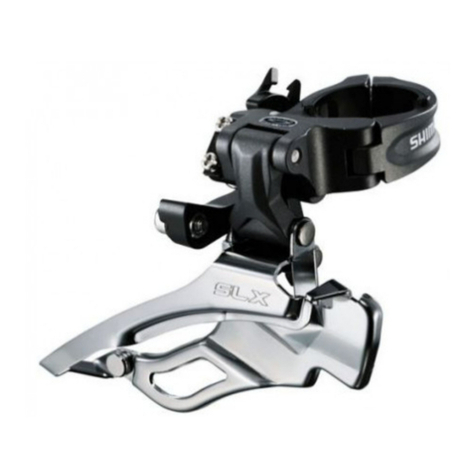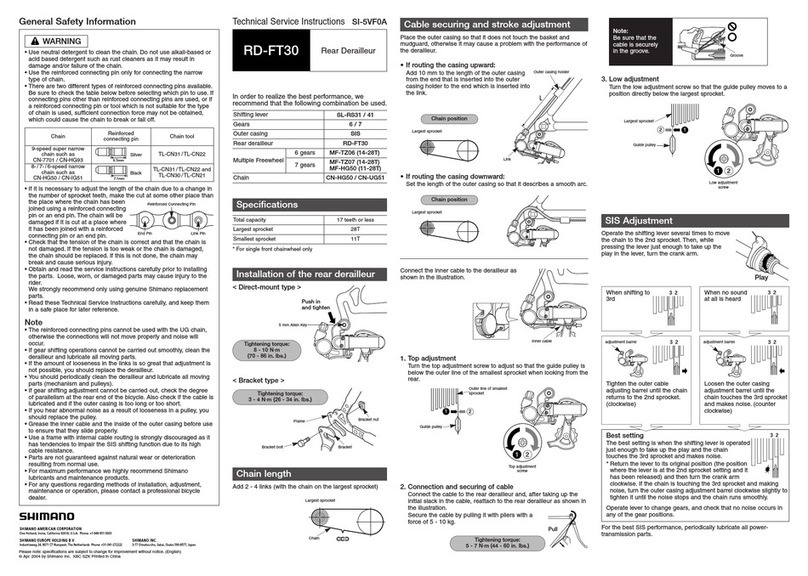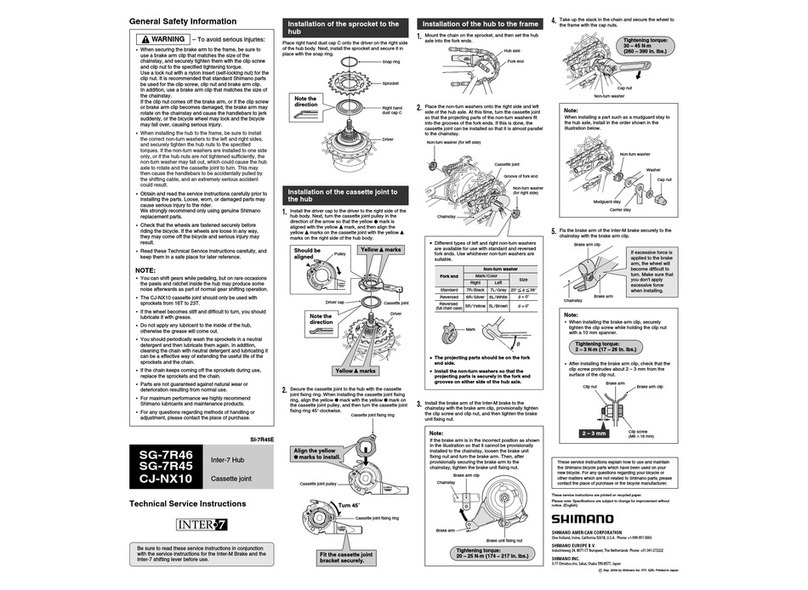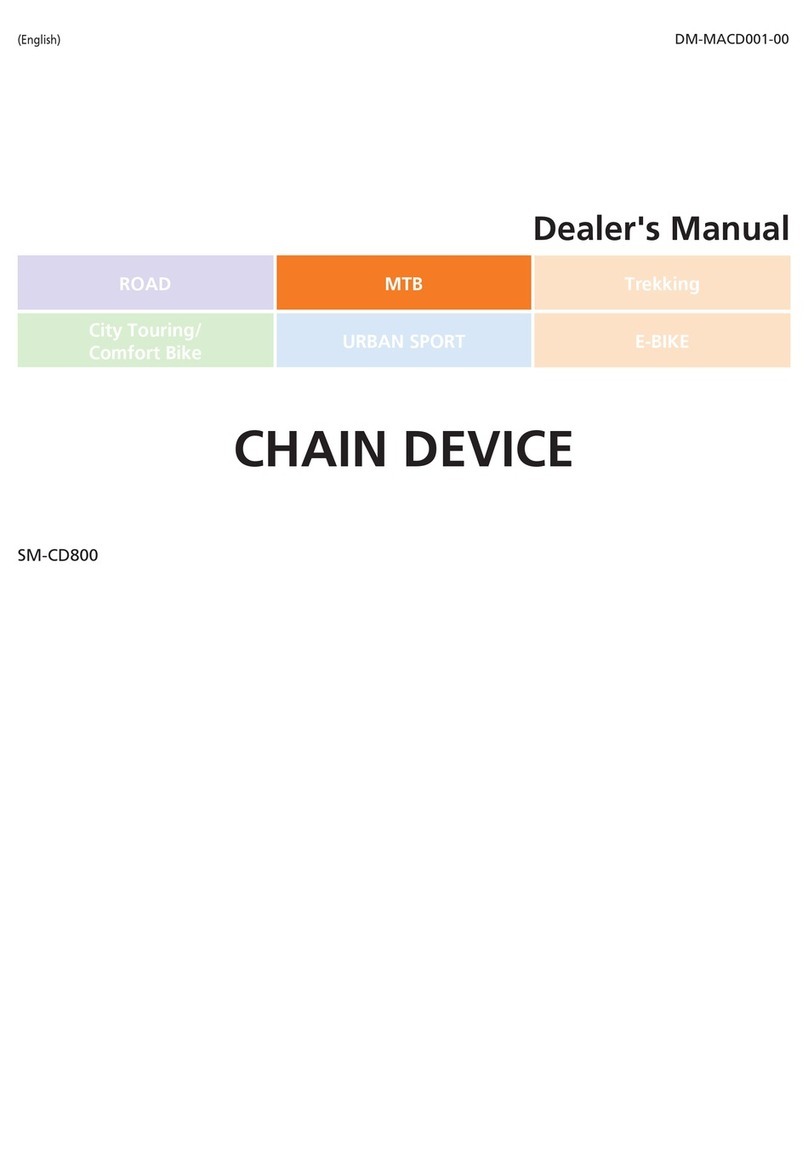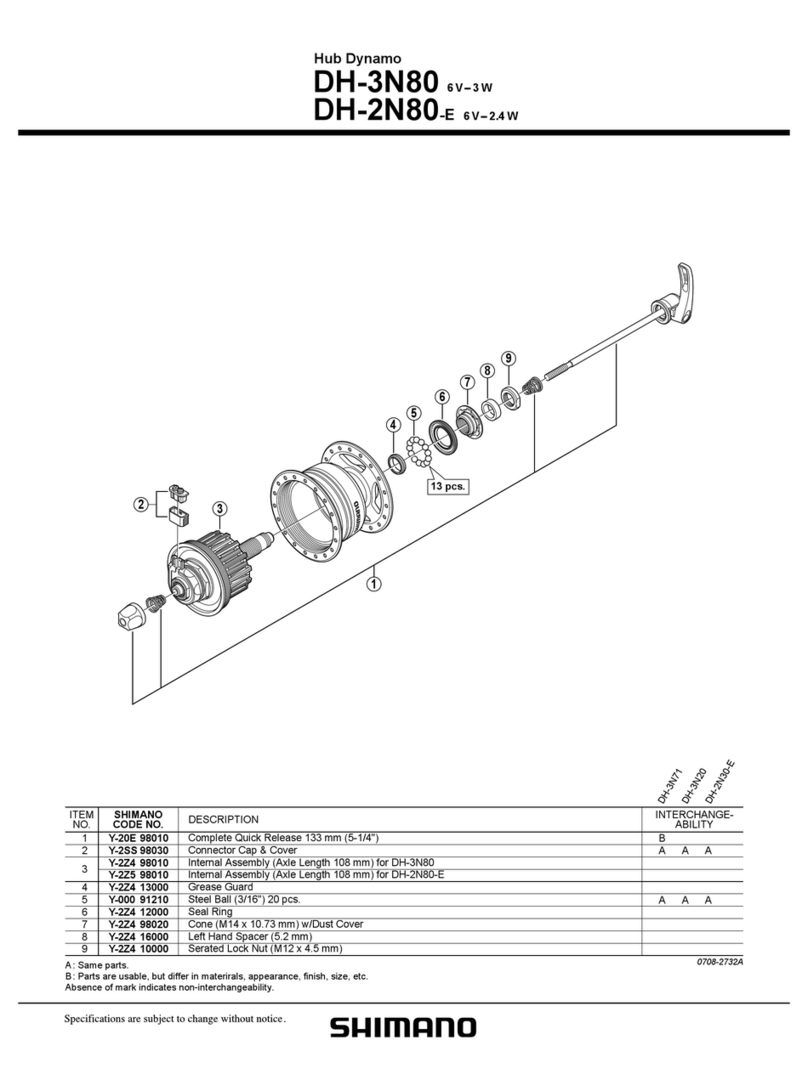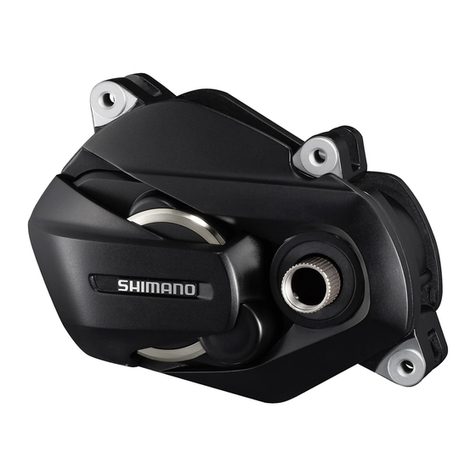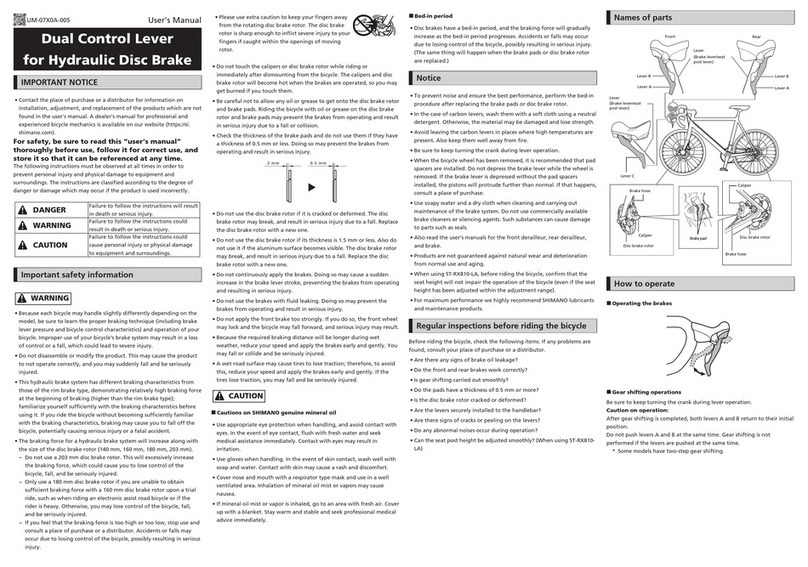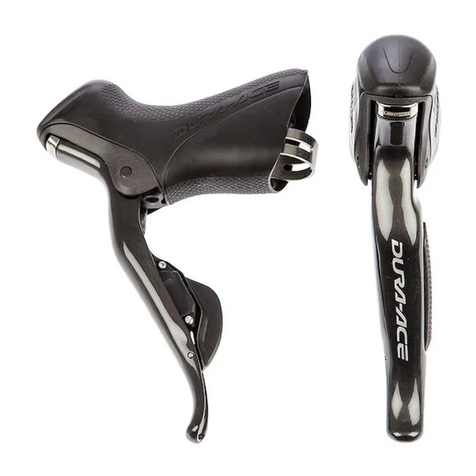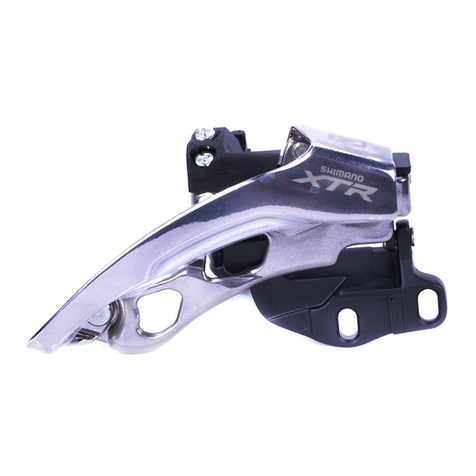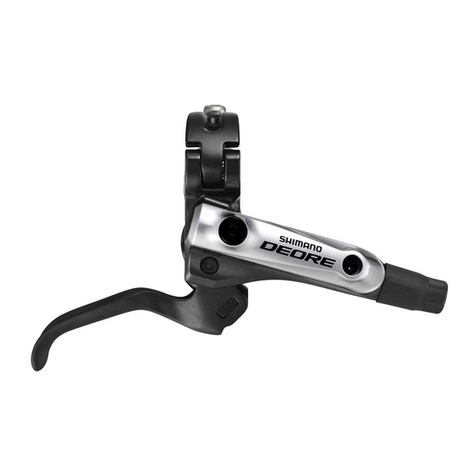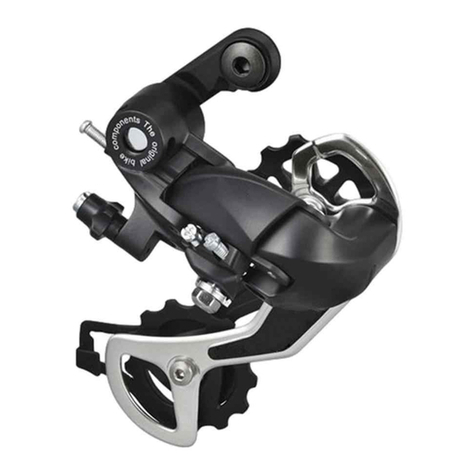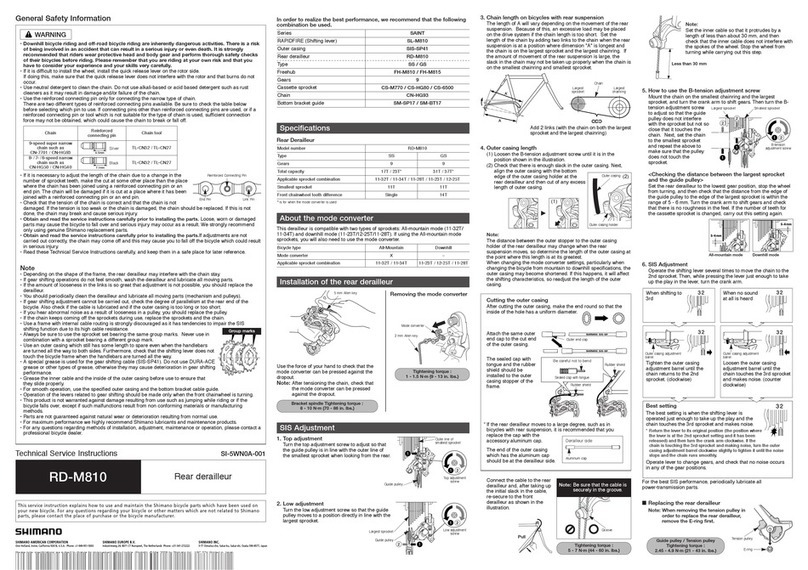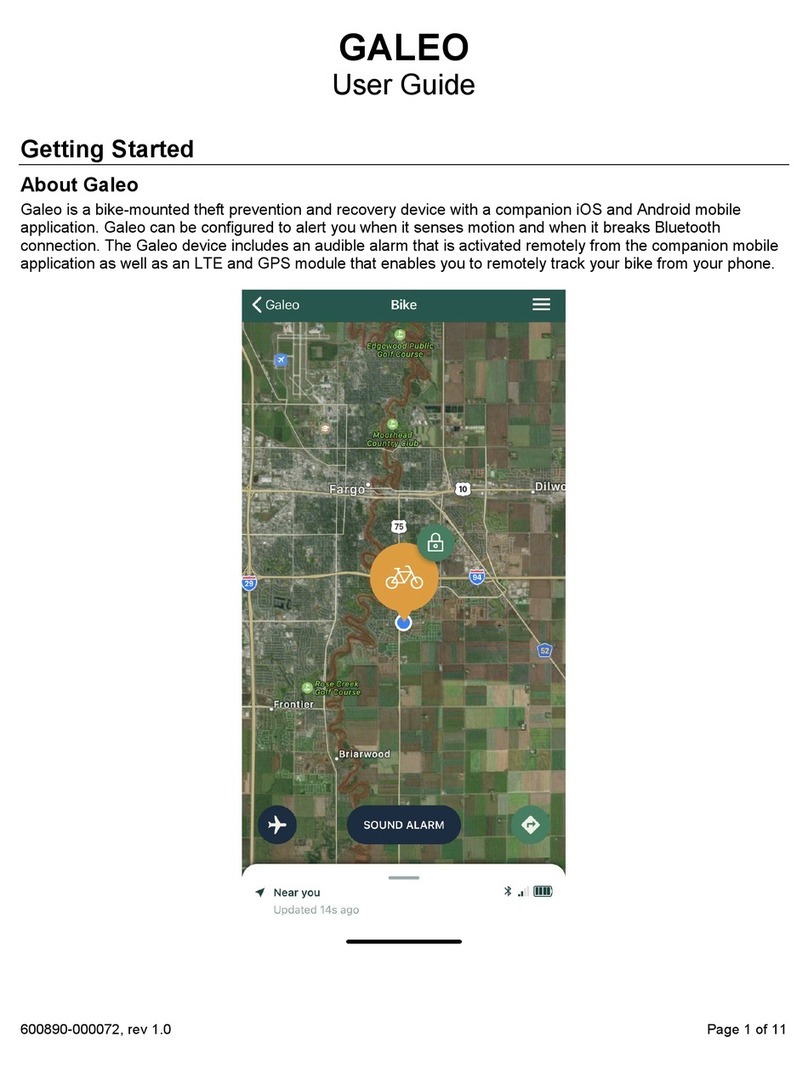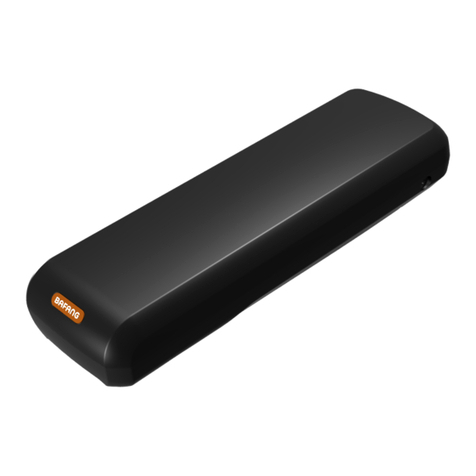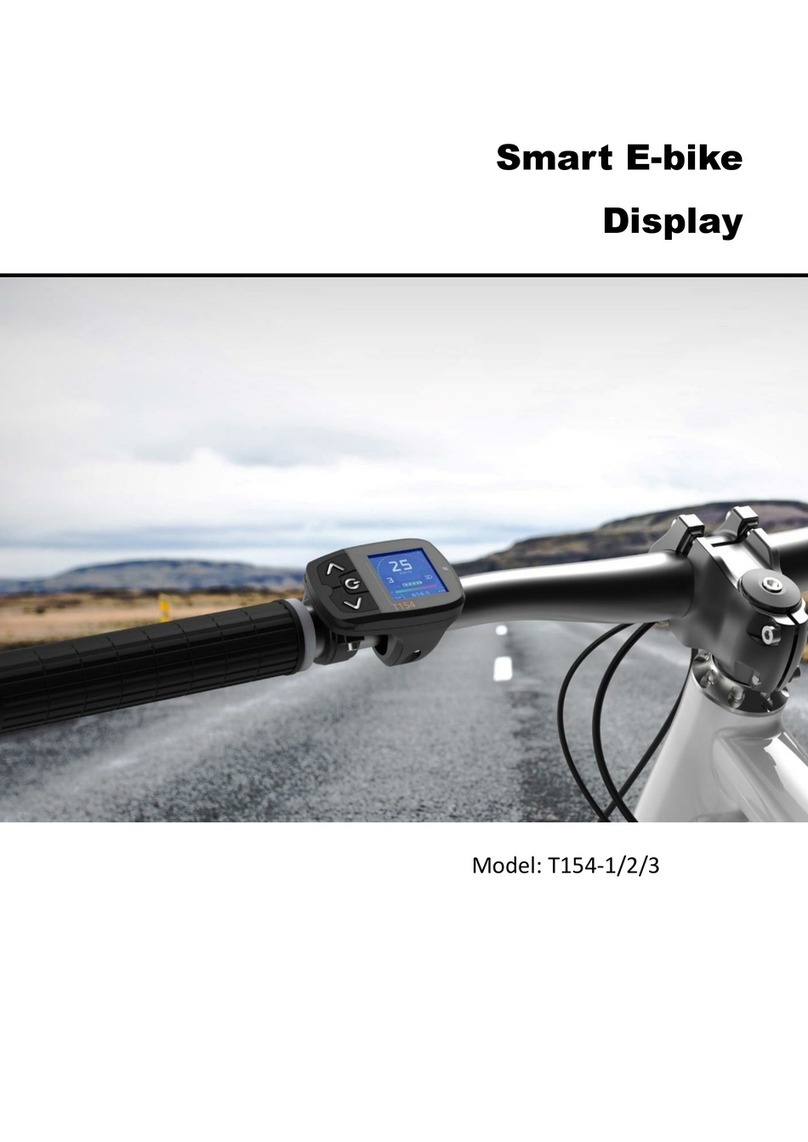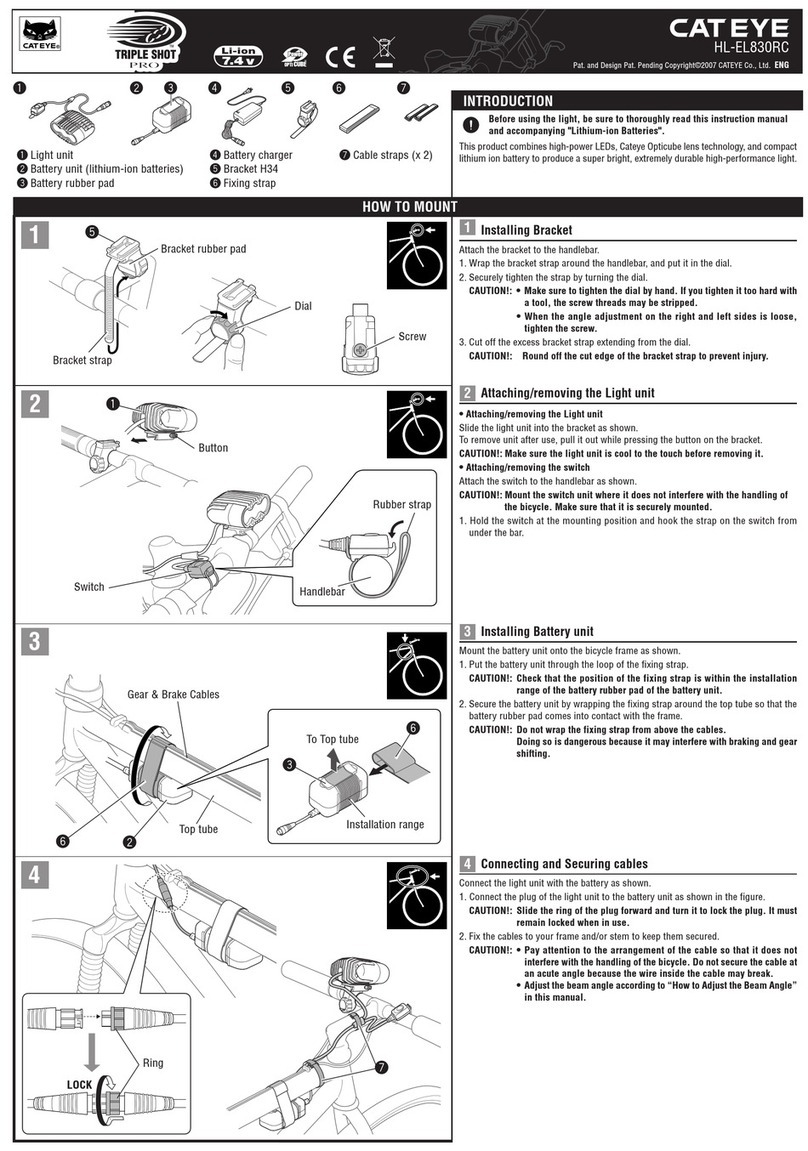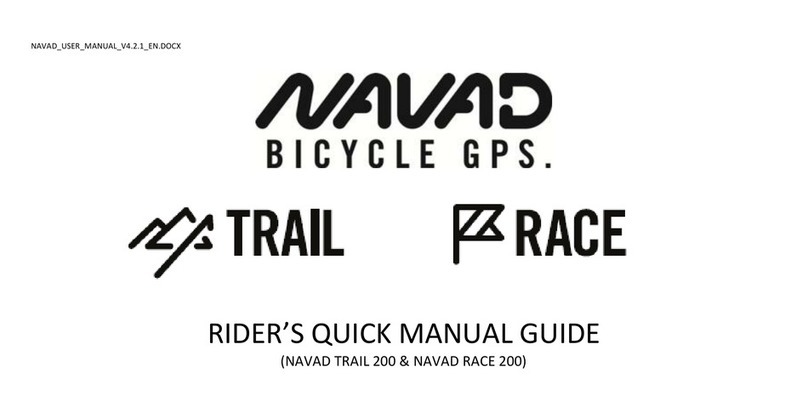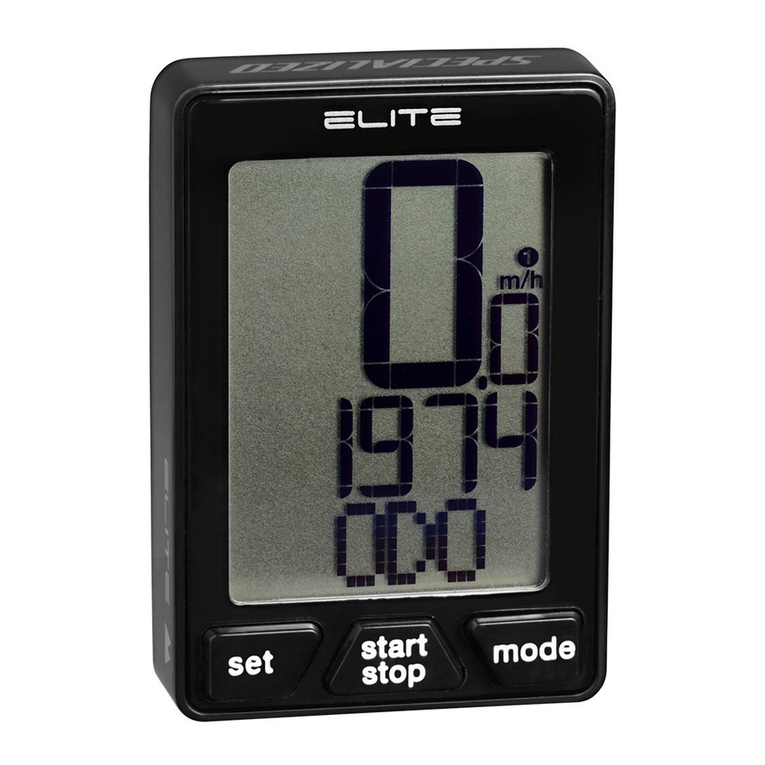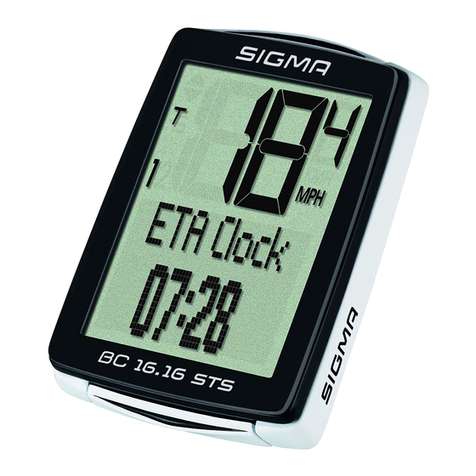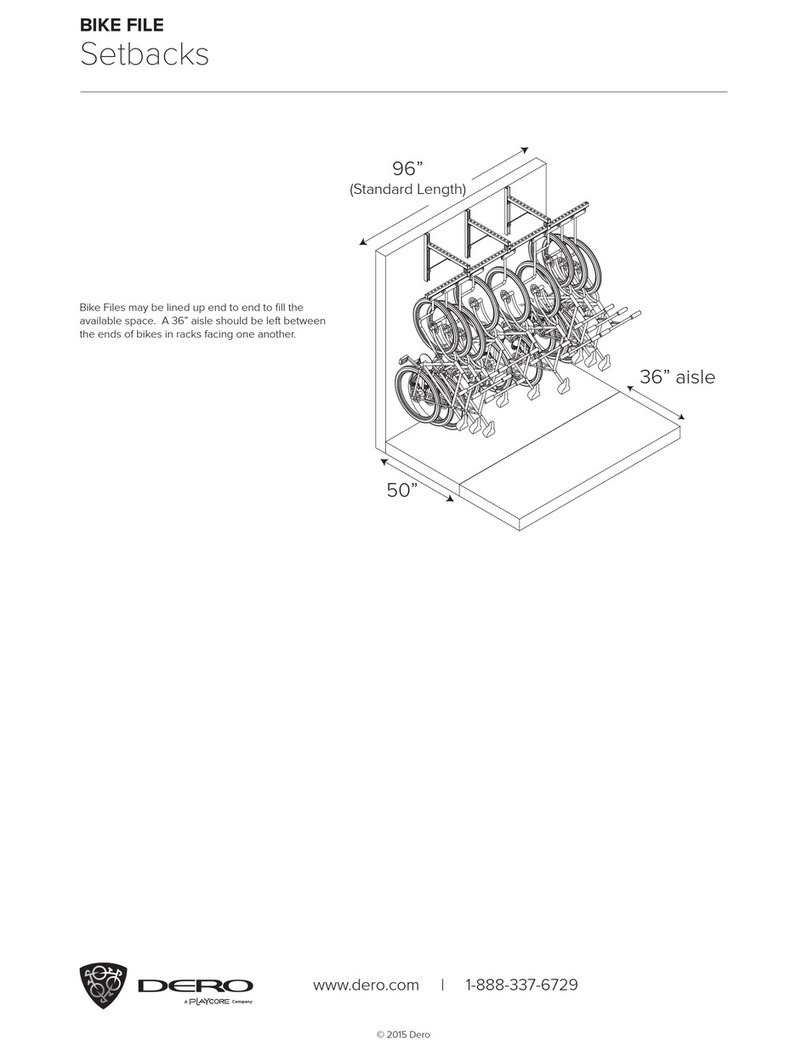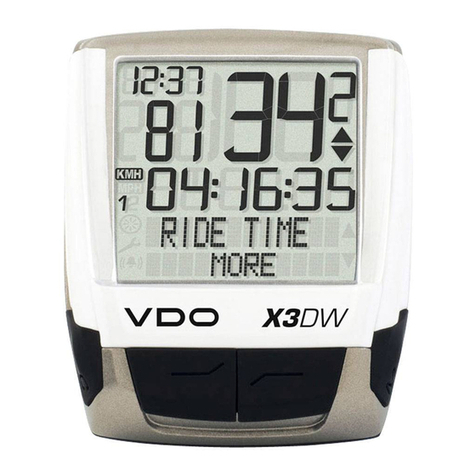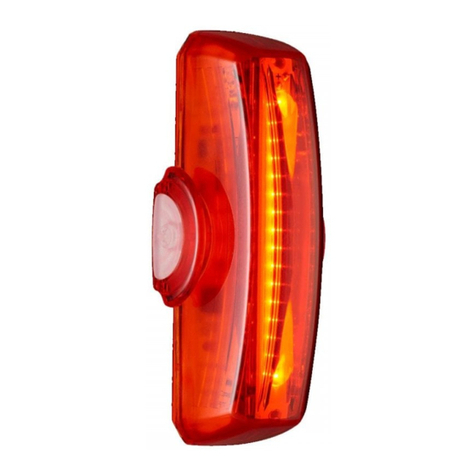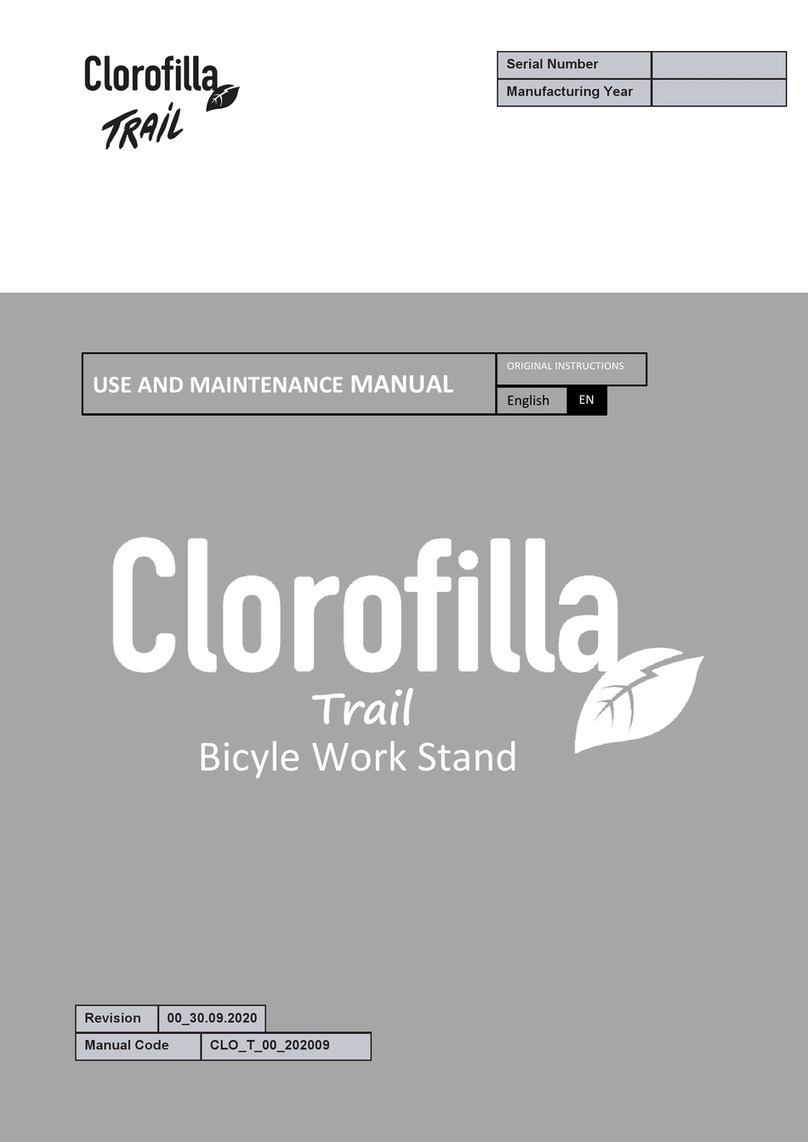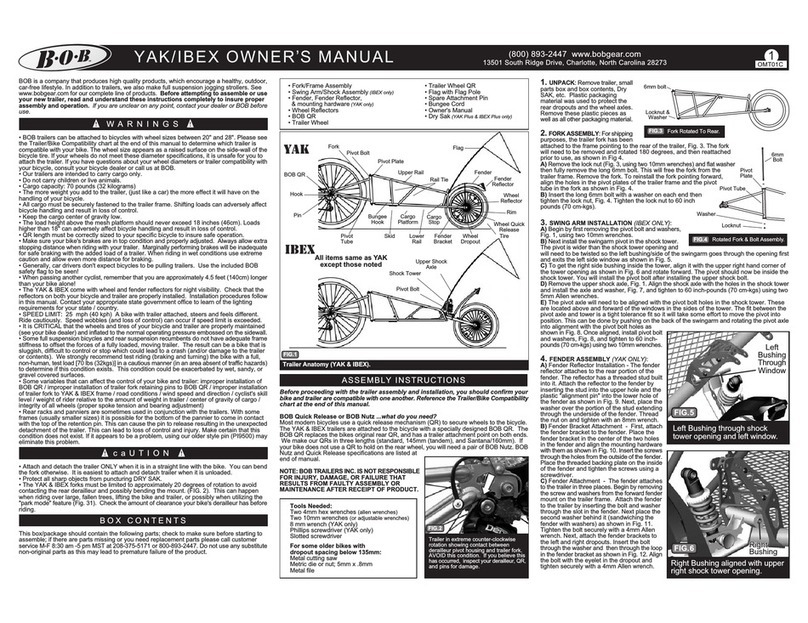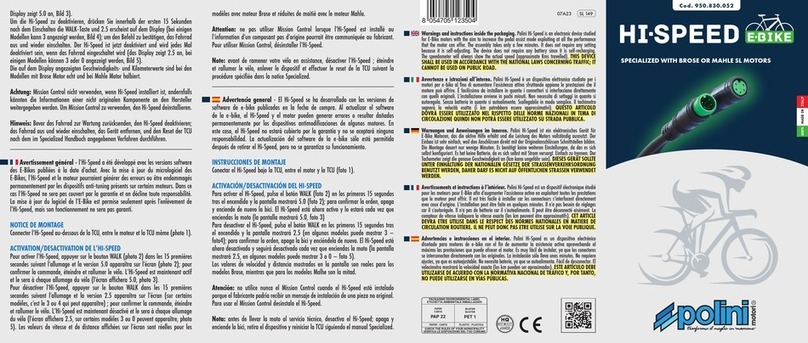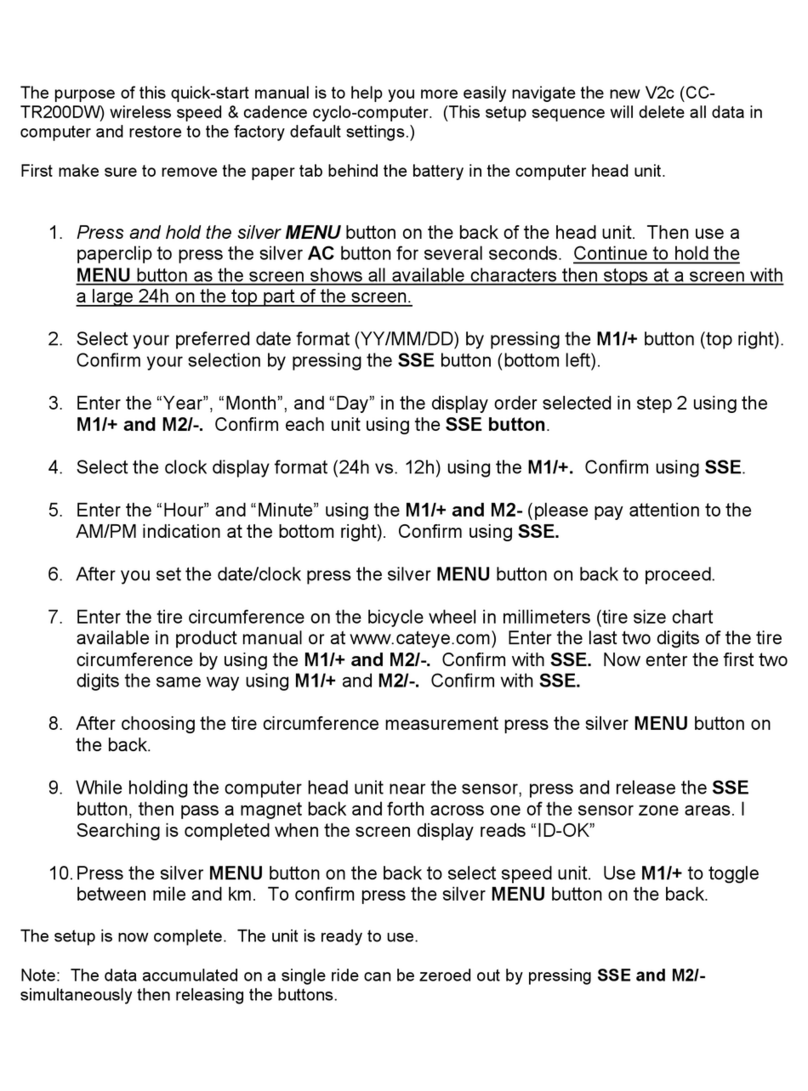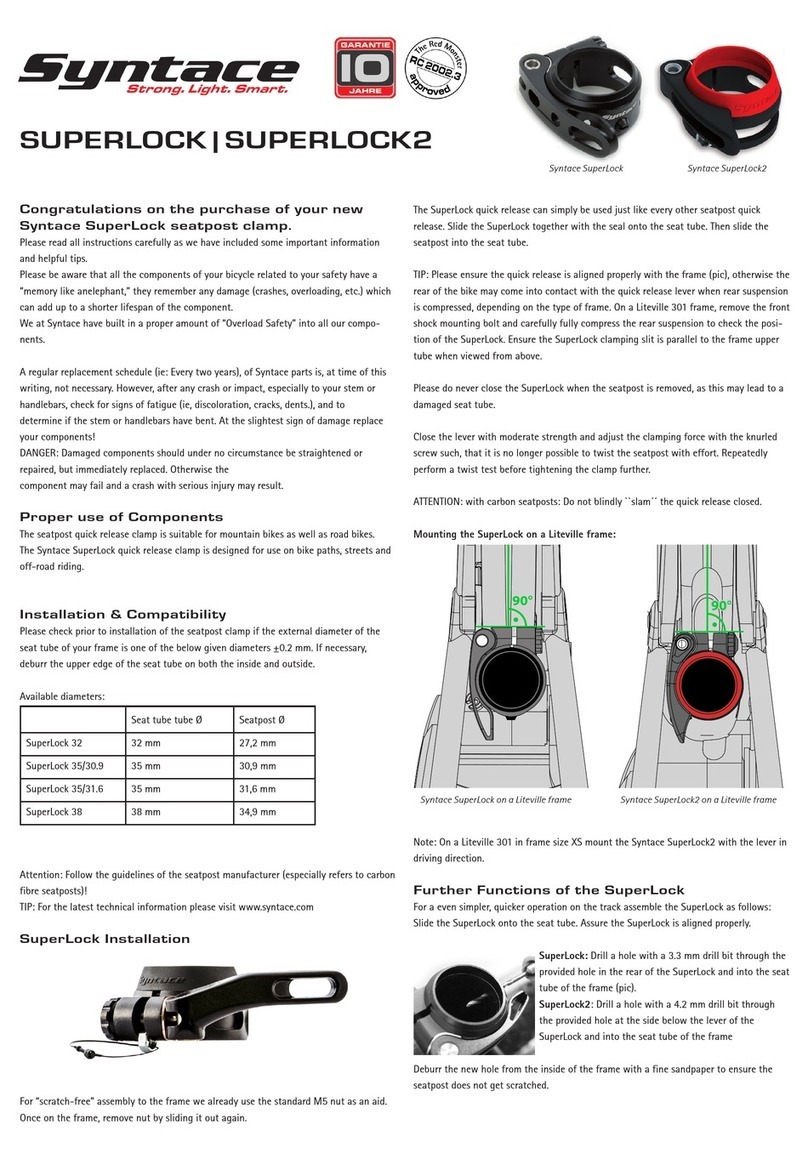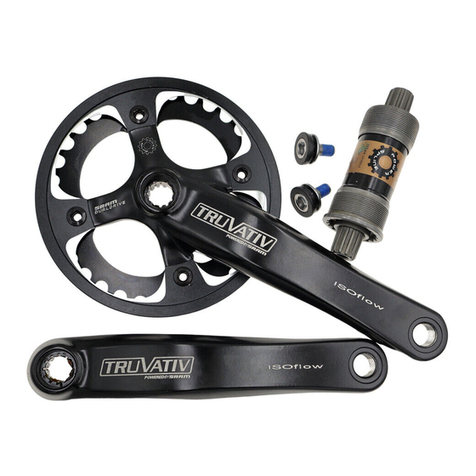Installation of the Front Derailleur
■Note
When installing the components to carbon frame/handle bar surfaces, verify with the manufacturer of the carbon frame/parts for their
recommendation on tightening torque in order to prevent over tightening that can cause damage to the carbon material and/or under
tightening that can cause lack of fixing strength for the components.
3. Top adjustment
Set so that the clearance
between the chain guide outer
plate and the chain is 0 - 0.5
mm.
4. Adjustment of the intermediate chainring
When carrying out adjustment, set the
chain to the largest sprocket, and at the
front, set the chain to the intermediate
chainring. Adjust using the outer casing
adjustment barrel so that the clearance
between the chain guide inner plate and
the chain is 0 - 0.5 mm.
For bracket type
Install as shown in the
illustration.
Bolt
AdapterAdapter
Front Derailleur
Front Chainwheel
SIS Adjustment
Cutting the outer casing
When cutting the outer casing, cut the
opposite end to the end with the marking.
After cutting the outer casing, make the
end round so that the inside of the hole
has a uniform diameter.
2. Connecting and securing the inner cable
Operate the lever 2 or more times to set the lever to the lowest
position. After removing the inner hole cover and opening the
cover, pass the cable through the outer casing adjustment bolt.
Pull the inner cable all the way through so that the end of the
inner cable is set onto the hook, and then close the cover.
Be sure to follow the sequence described below.
1. Low adjustment
First remove the Pro-Set alignment block. Next, set so that the
clearance between the chain guide inner plate and the chain is 0
- 0.5 mm.
Pro-Set alignment
block
Chain position
Largest
sprocket
Smallest
chainring
Tightening torque :
35 - 50 N·m {305 - 435 in. lbs.}
Chain
Chain guide
inner plate
Outer casing adjustment
barrel
Chain position
Smallest
sprocket
Largest
chainring
Chain position
Largest
sprocket
Intermediate
chainring
If the chain falls to the crank
side.
If shifting is difficult from the
intermediate chainring to the
smallest chainring.
Tighten the top adjustment screw
clockwise (about 1/4 turn).
Loosen the top adjustment screw
counterclockwise
(about 1/8 turn).
Loosen the low adjustment screw
counterclockwise
(about 1/4 turn).
If there is interference between
the chain and the front derailleur
inner plate at the largest
chainring.
If there is interference between
the chain and the front derailleur
outer plate at the largest
chainring.
Tighten the top adjustment screw
clockwise (about 1/8 turn).
Loosen the top adjustment screw
counterclockwise
(about 1/8 turn).
If the intermediate chainring is
skipped when shifting from the
largest chainring.
Loosen the outer casing
adjustment barrel
counterclockwise (1 or 2 turns).
If the chain falls to the bottom
bracket side.
If the lever is stiff when shifting
from the intermediate chainring
to the largest chainring
Tighten the outer casing
adjustment barrel clockwise
(1 or 2 turns).
Tighten the low adjustment screw
clockwise (about 1/2 turn).
Loosen the top adjustment screw
counterclockwise (about 1/4
turn).
5. Troubleshooting chart
After completion of steps 1 - 4, move the shifting lever to check the
shifting. (This also applies if shifting becomes difficult during use.)
If there is interference between
the chain and front derailleur
inner plate when the rear
sprocket is shifted to the largest
sprocket when the chainwheel is
at the intermediate chainring
position.
If shifting is difficult from the
intermediate chainring to the
largest chainring.
Inner hole cover
Hook
Inner hole cover
Attach the same outer
end cap to the cut end of
the outer casing.
Outer end cap
Operating the levers
■Gear shifting operation
The INSTANT RELEASE
mechanism makes fast gear
shifting possible because cable
tension is released immediately
when either the main lever or
the secondary release lever is
depressed.
Lever initial position
Becomes wider
Becomes
narrower
2 mm Allen key
ST-M770 ST-M775
Auxiliary release lever
■Operating the brake
lever
1st joint
Lever end
Approx.
2 mm
Lever initial position
The lever always returns to the initial position when it is released
after shifting. When operating the lever, always be sure to turn the
crank arm at the same time.
To shift from a small chainring to a larger chainring
When lever is pressed once, there is a shift of one step from a
small chainring to a larger chainring.
Example: from intermediate chainring to largest chainring.
To shift from a large chainring to a smaller chainring
When lever is pressed once, there is a shift of one step from a
large chainring to a smaller chainring.
Example: from largest chainring to intermediate chainring.
Adjusting the grip width
It is recommended that you adjust the grip widths of the levers to
the most comfortable widths for gear shifting and braking.
Install the inner hole cover by turning it
as shown in the illustration until it stops.
Do not turn it any further than this,
otherwise it may damage the thread on
the cover.
Low adjustment
screw
FD-M770/M772/M772A
Chain
Chain guide
inner plate
Chain length
Add 2 links (with the chain on both
the largest sprocket and the largest
chainring)
Largest sprocket Largest chainring
Chain
Tightening torque :
6 - 8 N·m {53 - 69 in. lbs.}
4 mm Allen key
Use a handlebar grip with a maximum
outer diameter of 32 mm.
Installation of the lever After taking up the initial slack in the cable, re-secure to the front
derailleur as shown in the illustration.
Normal type
< Normal type >
• FD-M770/M772/M772A
< Top route type >
Top route type
Pull
Pull
5 mm Allen key
Note:
Pass the cable
through as shown
in the illustration.
Wire
fixing bolt
■Be sure to read the service instructions for the FC-M770/M771-K Front Chainwheel in conjunction with these service
instructions.
Cover
FD-M770/M772/M772A
FD-M771/M773
Chain
Chain guide
outer plate
Top adjustment
screw
Becomes
narrower
Becomes
wider
General Safety Information
WARNING
“Maintenance interval depends on the usage and riding circumstances. Clean regularly the chain
with an appropriate chaincleaner. Never use alkali based or acid based solvents such as rust
cleaners. If those solvent be used chain might break and cause serious injury.”
• The ST-M770/ST-M775 DUAL CONTROL lever is used for both gear shifting and braking operations.
Make sure that you fully understand and are accustomed to the gear shifting and braking operations for your bicycle. Refer to
the illustration for the method of operation.
• Braking can only be performed with the DUAL CONTROL lever. If you use the gear shifting release lever (Auxiliary release
lever) for braking, the release lever may become damaged and you may lose control of the bicycle, which could result in an
accident.
• If the internal unit of the DUAL CONTROL lever becomes damaged, the lever will move down from the normal lever position,
and it may move to a position where braking is difficult to carry out. If this happens, you should stop riding the bicycle
immediately.
• Use the reinforced connecting pin only for connecting the narrow type of chain.
• There are two different types of reinforced connecting
pins available. Be sure to check the table before
selecting which pin to use. If connecting pins other than
reinforced connecting pins are used, or if a reinforced
connecting pin or tool which is not suitable for the type
of chain is used, sufficient connection force may not be
obtained, which could cause the chain to break or fall
off.
• If it is necessary to adjust the length of the chain due
to a change in the number of sprocket teeth, make the cut at some other place than the place
where the chain has been joined using a reinforced connecting pin or an end pin. The chain will
be damaged if it is cut at a place where it has been joined with a reinforced connecting pin or an
end pin.
• Be careful not to let the cuffs of your clothes get caught in the chain while riding, otherwise you
may fall off the bicycle.
• Check that the tension of the chain is correct and that the chain is not damaged. If the tension is too weak or the chain is
damaged, the chain should be replaced. If this is not done, the chain may break and cause serious injury.
• Use a front chainwheel which is compatible with 9-speed chains in conjunction with Shimano CN-7701, CN-HG93 and CN-
HG73 chains. If a chainwheel for an 8-speed chain or less is used, front chainwheel gear shifting problems may occur, or the
chain pins might fall out, causing the chain to break.
• The two left crank arm mounting bolts should be tightened alternately in stages rather than each bolt being fully tightened all at
once. Use a torque wrench to check that the final tightening torques are within the range of 12 - 14 N·m.
Furthermore, after riding approximately 100 km (60 miles), use a torque wrench to re-check the tightening torques.
It is also important to periodically check the tightening torques. If the tightening torques are too weak or if the mounting bolts are
not tightened alternately in stages, the left crank arm may come off and the bicycle may fall over.
• Check that there are no cracks in the crank arms before riding the bicycle. If there are any cracks, the crank arm may break and
you may fall off the bicycle.
•Obtain and read the service instructions carefully prior to installing the parts. Loose, worn or damaged parts may cause the
bicycle to fall over and serious injury may occur as a result. We strongly recommend only using genuine Shimano replacement
parts.
•Obtain and read the service instructions carefully prior to installing the parts. If adjustments are not carried out correctly, the
chain may come off and this may cause you to fall off the bicycle which could result in serious injury.
• Read these Technical Service Instructions carefully, and keep them in a safe place for later reference.
Note
• In addition, if pedaling performance does not feel normal, check this once more.
• Before riding the bicycle, check that there is no play or looseness in the connection. Also, be sure to retighten the crank arms
and pedals at periodic intervals.
• Do not wash the bottom bracket with high-pressure jets of water.
• If you feel any looseness in the bearings, the bottom bracket should be replaced.
• If gear shifting operations do not feel smooth, wash the derailleur and lubricate all moving parts.
• If the amount of looseness in the links is so great that adjustment is not possible, you should replace the derailleur.
• You should periodically wash the chainrings in a neutral detergent and then lubricate them again. In addition, cleaning the chain
with neutral detergent and lubricating it can be an effective way of extending the useful life of the chainrings and the chain.
• If the chain keeps coming off the chainrings during use, replace the chainrings and the chain.
• When the chain is in the position shown in the illustration, the chain may contact the front
chainrings or front derailleur and generate noise. If the noise is a problem, shift the chain
onto the next-larger rear sprocket or the one after.
• Apply grease to the left and right adapters before installing them.
• For smooth operation, use the specified outer casing and the bottom bracket cable guide.
• This front derailleur is for triple front chainwheel use only. It cannot be used with the
double front chainwheel, as the shifting points do not match.
• When installing the top route type, choose a frame that has three outer casing holders as
shown in the illustration at right.
• Use an outer casing which still has some length to spare even when the handlebars are turned all the way
to both sides. Furthermore, check that the shifting lever does not touch the bicycle frame when the
handlebars are turned all the way.
• Make sure that the gear shifting cable and the brake cable do not obstruct each other during braking
operations. If they do obstruct, it may interfere with braking.
Install the cables so that they still have some slack in them even when the handlebars are turned fully in
either direction.
• A special grease is used for the gear shifting cable (SIS-SP41). Do not use DURA-ACE grease or other
types of grease, otherwise they may cause deterioration in gear shifting performance.
• Grease the inner cable and the inside of the outer casing before use to ensure that they slide properly.
• Operation of the levers related to gear shifting should be made only when the front chainwheel is turning.
• If the brake fluid used in the oil disc brakes is of a type which tends to adhere to the plastic par ts of the shifting lever, this may
cause the plastic parts to crack or become discolored. Therefore, you should make sure that the brake fluid does not adhere to
these plastic parts.
The mineral oil which is used in SHIMANO disc brakes does not cause cracking or discoloration if it adheres to plastic parts, but
such parts should be cleaned with alcohol beforehand to prevent foreign particles from adhering.
• Do not use the fixing bolt (made from aluminum) for the auxiliary release lever cap to secure the auxiliary release lever.
• Parts are not guaranteed against natural wear or deterioration resulting from normal use.
• For maximum performance we highly recommend Shimano lubricants and maintenance products
• For any questions regarding methods of installation, adjustment, maintenance or operation, please contact a professional
bicycle dealer.
Chain toolChain
9-speed super narrow
chain such as
CN-7701 / CN-HG93
8- / 7-/ 6-speed narrow
chain such as
CN-HG50 / CN-HG40
Reinforced
connecting pin
TL-CN32 / TL-CN27
TL-CN32 / TL-CN27
